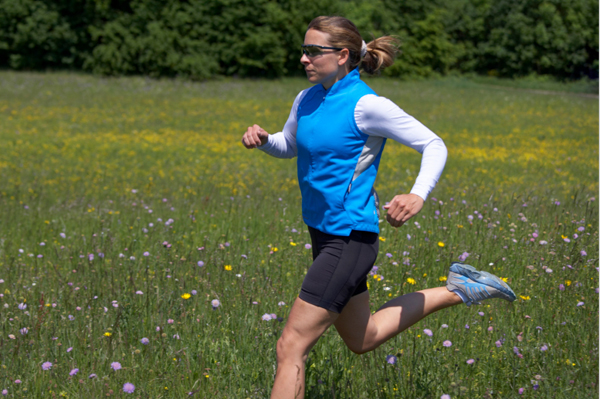Beat the Heat: 5 Ways to Stay Fit and Cool
Get Fit For Summer TEXT- FitnessX to 69302 to be entered to win a Free 1 Year Membership Getty
Getty1. Move in the Morning
Be an early bird with your outdoor workout when temperatures are lower and air quality is at its best. According to a variety of international studies, car emissions and other pollutants (which can trigger a slew of breathing problems) are less ostensible in the a.m. If you prefer to run in the evenings, take to a park. Streets have higher levels of carbon monoxide, according to research conducted by the Environmental Protection Agency. And no matter what time you head outdoors, slather on a sweat-proof sunscreen 30 minutes prior to extended sun exposure. A light spray formula, such as Coppertone Sport Clear Continuous Spray, makes all-over application a cinch.
2. Make a Splash
Cool off with a dip. Swimming is one of the best workouts out there. It is low-impact, cardio-enhancing activity that also strengthens and tightens muscles. Other water sports also offer full-body benefits. Kayaking targets the core and arms, windsurfing enhances balance and upper-body strength, and waterskiing challenges the entire body. Mix it up and try stand-up paddle surfing, a Hawaiian import that has been making a splash across the country. Water's reflective properties can make the damaging effects of the sun even stronger. Protect skin with a wide-brimmed hat and wear UV-blocking sunglasses at all times. And opt for clothing with sun-shielding properties such as Patagonia's W Sunshade shirt.
3. Stay Indoors
Watch The Weather Channel and it's easy to see that many cities are issuing heat advisories. So although the sun is shining, staying inside may be a healthier option. Try a new class at your gym or, Get involved with a Personal Trainer - Sign up for a free fitness evaluation at Fitness Experience
4. Drink Up
Post-exercise, switch from summertime favorite lemonade to water with lemon and you'll save calories. According to a recent study, those who consume sweet drinks after exercising tend to overeat afterward. Lemon water not only curbs caloric intake but also prevents dehydration, keeps potassium levels in check and can even banish bloat. Make sure you drink water every 15 to 20 minutes while exercising in the heat. Want a little more flavor? Unsweetened iced tea can amp up antioxidant intake. Bonus: Green tea has been linked to metabolism boosting properties.
5. Find Balance
Sweating can be positive (the action eliminates waste), but it can also strip the body of much-needed nutrients. Along with potassium, salt is lost through sweating. Replenish the nutrient with body-benefiting foods like olives (which help heart health), low-fat cheese (which has been linked with weight loss) and almonds (a good source of fiber and protein).






